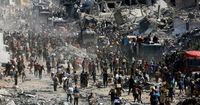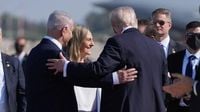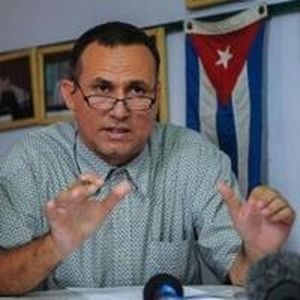World leaders gathered in Sharm el-Sheikh, Egypt, on October 13, 2025, for a summit that many hope will mark a turning point in the more than two-year war between Israel and Hamas in Gaza. The meeting, dubbed the Summit for Peace, was co-chaired by U.S. President Donald Trump and Egyptian President Abdel Fattah el-Sissi, and came on the heels of a breakthrough ceasefire agreement and a dramatic prisoner swap between the warring parties.
The summit’s timing was anything but accidental. Just hours before, Hamas released the last 20 living Israeli hostages it held, while Israel freed hundreds of Palestinian prisoners and detainees. This exchange was a linchpin of the first phase of the U.S.-brokered peace plan, which aims to freeze the frontlines, halt military operations, and pave the way for a broader, lasting peace. According to The Associated Press, Egypt’s Foreign Minister Badr Abdelatty stressed that "it's crucial to ensure that Israel and Hamas fully implement the first phase of the ceasefire deal so that the parties, with international backing, can begin negotiations on the second phase."
Negotiations leading to this point were anything but smooth. Israel and Hamas, bitter adversaries with a history of failed talks, relied on mediators from Egypt and Qatar to hammer out the details. The immediate catalyst for the deal, as reported by BBC, was an Israeli attack on Doha that violated Qatar’s territorial integrity and nearly killed Hamas negotiators—an event that prompted President Trump to pressure Israel into making significant concessions.
Trump’s plan, described as a 20-point roadmap, was developed in consultation with key Arab and Muslim countries, including Egypt, Qatar, and Turkey. The plan’s first phase mandated an immediate ceasefire, the release of all Israeli hostages (alive and deceased) within 72 hours, and the freeing of Palestinian prisoners, including those serving life sentences and thousands detained since the war’s onset. The ceasefire, which took effect on October 10, also called for Israeli troop withdrawals from parts of Gaza, allowing hundreds of thousands of displaced Palestinians to return home. Aid groups, blocked from Gaza for months, began preparing to deliver desperately needed relief.
But as the summit unfolded, the atmosphere was one of cautious optimism. While the prisoner swap and troop pullbacks were celebrated as major steps forward, the road ahead is fraught with unresolved questions. Who will govern Gaza in the postwar era? Will Hamas agree to disarm, as Israel insists? And how will the international community raise the estimated $53 billion needed to rebuild the battered enclave?
According to CBS News, the Israeli military had withdrawn from Gaza City, Khan Younis, and other areas, but as of October 13, still controlled about 53% of the territory—including much of the southern city of Rafah and a wide strip along Gaza’s border with Israel. Israeli Prime Minister Benjamin Netanyahu made his position clear, telling reporters, "Hamas will disarm and Gaza will be demilitarized. If this can be achieved the easy way, all the better; if not, it will be achieved the hard way."
The peace plan envisions a phased approach. After the initial ceasefire and prisoner releases, the second phase will focus on demilitarization. This means the destruction of Hamas’s tunnels and military infrastructure, with the goal of turning Gaza into, as the plan puts it, "a de-radicalized terror-free zone that does not pose a threat to its neighbors." Amnesty is on the table for Hamas members who renounce violence, with safe passage offered to those who choose exile.
Security and governance in a postwar Gaza are equally contentious. The plan calls for an Arab-led international peacekeeping force, backed by a U.N. Security Council resolution, to oversee security and facilitate the training of a new Palestinian police force. About 200 U.S. troops have already been deployed to Israel to help monitor the ceasefire and the early stages of the peace plan, working alongside partner nations and nongovernmental organizations. Egypt and Jordan are slated to train the new Palestinian security force, while the transitional administration in Gaza would be led by Palestinian technocrats and supervised by an international body—including, notably, a "Board of Peace" headed by President Trump and featuring international figures such as former U.K. Prime Minister Tony Blair.
Yet, the question of Palestinian statehood remains unresolved. The plan recognizes statehood as "the aspiration of the Palestinian people," but offers no clear timetable or guarantee. Netanyahu has repeatedly stated that a Palestinian state will not be established under the current arrangement, a stance that has drawn criticism from many quarters. Hamas, for its part, insists that Gaza’s future government should be determined by Palestinians themselves, not imposed by outside powers.
The summit’s guest list reflected the global stakes. Leaders from Turkey, Jordan, Britain, Germany, France, Italy, the United Nations, and the European Union were present, as was Palestinian Authority leader Mahmoud Abbas. Iran, a key backer of Hamas, was invited but did not attend—reflecting its diminished influence in the region since the ceasefire. Britain’s Prime Minister Keir Starmer pledged £20 million to support water and sanitation in Gaza, and announced plans to host a three-day conference to coordinate reconstruction efforts. Germany’s Chancellor Friedrich Merz, a staunch supporter of Israel, expressed concern over Israel’s conduct during the war and signaled Berlin’s willingness to co-host the reconstruction conference with Egypt.
Sharm el-Sheikh, the Red Sea resort town that played host to the summit, has a storied history as a venue for peace negotiations. From the days of President Hosni Mubarak to the present, it has witnessed rounds of talks between Israel and the Palestinians. Monday’s summit was its first such gathering under President el-Sissi, and expectations were high that it could help "usher in a new page of peace and regional stability," as his office put it.
Despite the hopeful rhetoric, the situation remains fragile. The ceasefire is still in its infancy, and both sides have warned that any violation could trigger a return to hostilities. The international community faces the daunting task of not only keeping the peace but also rebuilding a devastated Gaza. The World Bank, along with Egypt’s postwar plan, estimates that $53 billion will be needed for reconstruction and recovery. Egypt has already announced plans to host a future conference dedicated to this effort.
As the summit drew to a close after two hours, world leaders prepared to issue a joint statement reaffirming their commitment to the peace process. The prisoner swap, the ceasefire, and the first steps toward reconstruction have offered a glimmer of hope for a region weary of war. But as negotiators prepare for the next phase, the world will be watching—hoping that this fragile peace can hold, and that Gaza can finally begin to heal.





